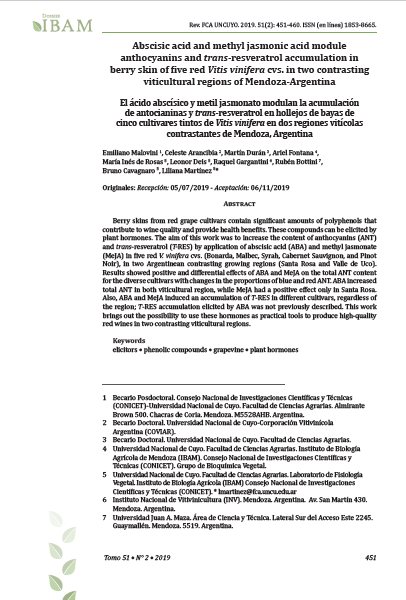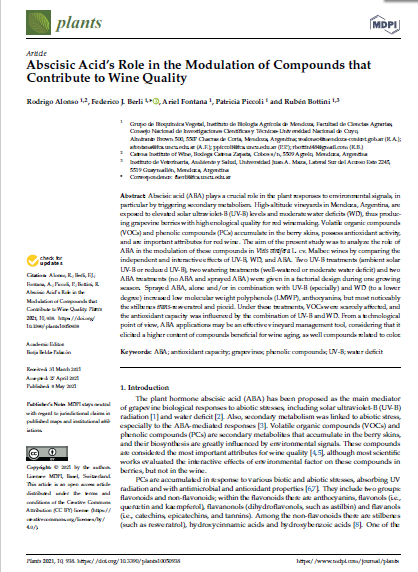Browsing Ciencias Ambientales, Agroindustrias y de la Tierra by Subject "Phenolic compounds"
Now showing items 1-2 of 2
-
Abscisic acid and methyl jasmonic acid module anthocyanins and trans-resveratrol accumulation in berry skin of five red Vitis vinifera cvs. in two contrasting viticultural regions of Mendoza-Argentina.
(Comité editor Revista de la Facultad de Cs. Agrarias, Universidad Nacional de Cuyo., 2019-11-06)Berry skins from red grape cultivars contain significant amounts of polyphenols that contribute to wine quality and provide health benefits. These compounds can be elicited by plant hormones. The aim of this work was to increase the content of anthocyanins (ANT) and trans-resveratrol (T-RES) by application of abscisic acid (ABA) and methyl jasmonate (MeJA) in five red V. vinifera cvs. (Bonarda, Malbec, Syrah, Cabernet Sauvignon, and Pinot Noir), in two Argentinean contrasting growing regions (Santa Rosa and Valle de Uco). Results showed positive and differential effects of ABA and MeJA on the ... -
Abscisic Acid’s Role in the Modulation of Compounds that Contribute to Wine Quality
(Comité Editorial Plants Journal, 2021-05-08)Abscisic acid (ABA) plays a crucial role in the plant responses to environmental signals, in particular by triggering secondary metabolism. High-altitude vineyards in Mendoza, Argentina, are exposed to elevated solar ultraviolet-B (UV-B) levels and moderate water deficits (WD), thus producing grapevine berries with high enological quality for red winemaking. Volatile organic compounds (VOCs) and phenolic compounds (PCs) accumulate in the berry skins, possess antioxidant activity, and are important attributes for red wine. The aim of the present study was to analyze the role of ABA in the ...











